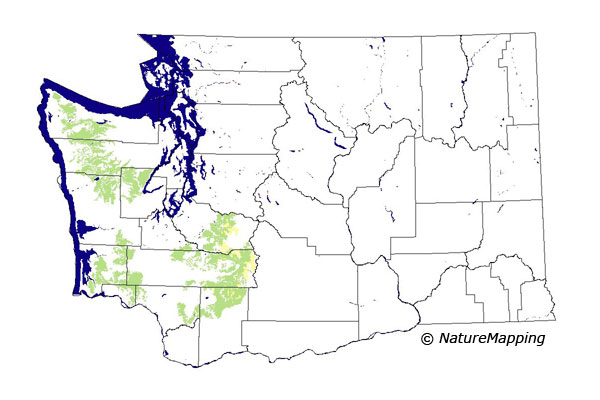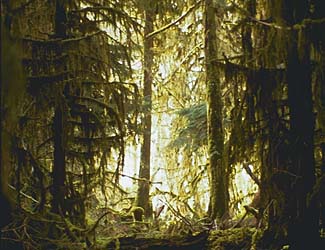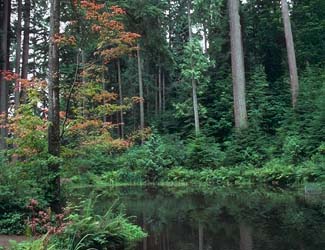GAP Analysis Predicted Distribution Map
Van Dyke's Salamander (Plethodon vandykei)
Species Code: PLVA
|
Legend:
 = Core Habitat = Core Habitat
 = Marginal Habitat = Marginal Habitat
Metadata
(Data about data or how the map was made)
Predicted Distribution
Amphibians do not migrate as some birds and mammals, so the colored areas depict the predicted range for the Van Dyke's Salamander year-round. The habitats were identified using 1991 satellite imagery, other datasets and experts throughout the state, as part of the Washington Gap Analysis Project.
Click to enlarge distribution map
|
Distribution and Habitat Requirements
Van Dyke's salamanders are fund primarily in regions of high rainfall, usually in association with rock, sometimes
woody debris. Preferred habitats include the splash zones of rocky streams, talus, fractured rock, near waterfalls,
or under woody debris near water (Leonard et al, 1993).
This species is a small stream associate. This species survived in Bean Creek in the Mt. St. Helens blast zone, so there may be
other populations in streams in the blast zone. It seems to be associated with very wet areas where quantities
of cool water percolates through the soil each winter.
Models
The Outer and Inner Olympic Peninsula, Puget Trough and Southwest Cascades ecoregions were selected. All west-side forest
zones in its range, up to and including the Silver Fir zone were core. The Mountain Hemlock zone was marginal.
Conifer-lined riparian areas were good habitats. All open and closed-canopy, mid- to late-seral conifer forests
were considered suitable if appropriate microhabitats were available.
The area above the Quinault River and parts of the Olympic National Park have not been well survey, but it is
probable that the species occurs there wherever there is appropriate habitat (Al Wilson, pers. comm.).
Translated from the Washington Gap Analysis Amphibians and Reptiles Volume by Karen Dvornich
Webpage designed by Dave Lester

 = Core Habitat
= Core Habitat = Marginal Habitat
= Marginal Habitat
